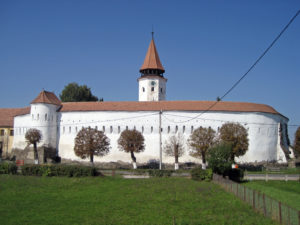Fortified Churches in Transylvania



Let me say a few words about fortified churches in general:
https://www.hungarianottomanwars.com/essays/who-were-the-german-saxons-in-transylvania/





I have talked about the few lucky restored fortified churches and I mentioned some examples of the hiding ones that are less known by people. Now, let us see a few unlucky ones that have suffered sorrowful damage during the past years. When there isn’t a supporting community, the built heritage will perish. Due to the Exodus of the Saxon people in the 20th century, these wonderful 800-year-old buildings cannot be sustained by the remaining old people alone.

For example, there were 50 elderly German Saxons living in Doborka (Dobârca, Dobring) in 2011. Its church was built in the 13th century, and it was fortified in the Gothic style. The building was destroyed twice by the Turks in 1479, and it was also destroyed in 1599 by the troops of Voivode Mihai Viteazul. It burned down also in 1658 when Transylvania was punished by the Crimean Tatars. Now, only two towers out of the four are left. It was still looking intact in 2006 but in 2012, all the benches were broken already. In the empty church, cows and horses were kept until 2017.

Alcina (Alzen, Comuna Alțâna) is the next one, there were 69 Saxons living in 2002. The settlement was first mentioned in 1291, and we know that it suffered because of the Turks in 1493 but the biggest damage was done in 2020 when the ceiling collapsed.

Szászveresmart ( Rotbav, Rothbach) is the next fortified church to speak of, it was first mentioned as Werizmorth in 1337. It was damaged in 1599 and 1600 by fire, and the troops of General Basta ruined it in 1603, led by Rácz György, it was attacked in 1611 by the soldiers of Radu Serban, too. Yet, they could not wipe it off the surface of the Earth. Sadly, it collapsed due to human neglect in 2016.


The fortified church of Rádos (Roadeș, Radenthal) was built in the 15th century, its bell tower and a large section of the wall fell in 2016 but miraculously enough, the roof survived the tragic event.

Magyargyerőmonostor ( Mănăstireni, Ungarisch Klosterdorf/Deutsch Klosterdorf) was mentioned first in 1332, it is among those fortified churches that are on the fringe of collapse. In 2017, there was a storm that damaged the pine trees around it so the trees had to be cut off. Unfortunately, the wall has been weakened so much that it can fall every minute.

Dear Readers, I can only make this content available through small donations or by selling my books or T-shirts.
If you like my writings, please feel free to support me with a coffee here:
You can check out my books on Amazon or Draft2Digital, they are available in hardcover, paperback, or ebook:
https://www.amazon.com/dp/198020490X
or at https://books2read.com/b/boYd81


My work can also be followed and supported on Patreon: Become a Patron!http://Become a Patron!



